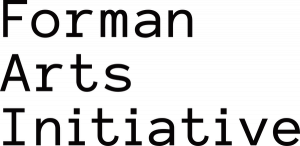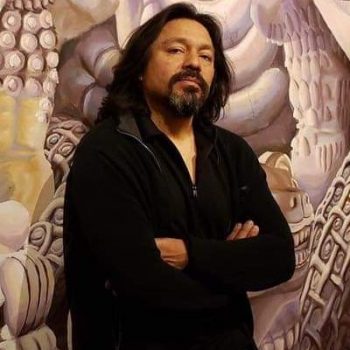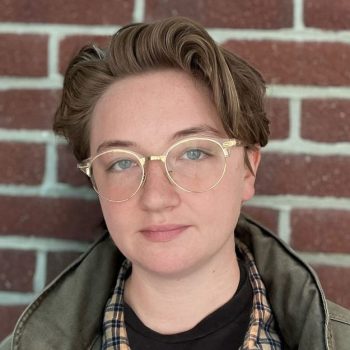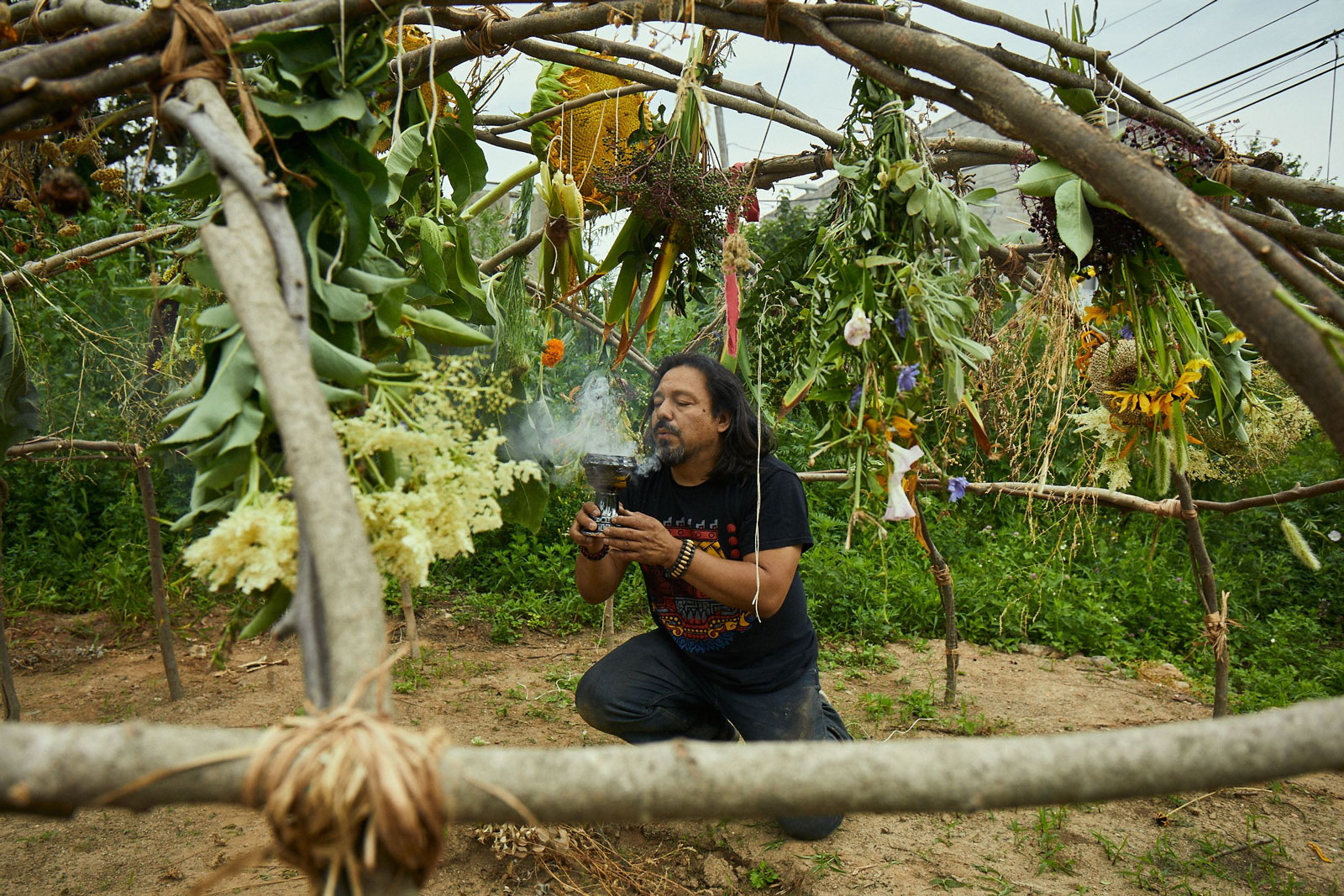
You’ve probably seen Cesar Viveros’s work, maybe even without realizing it. A renowned muralist who moved here from Mexico when he was 25, Viveros has worked with Mural Arts Philadelphia since 1997 to transform many building façades into monuments to their communities — such as The Sacred Now and Curing Community, both in North Philly.
Viveros’s less-known, but equally impactful art — Aztec ceremonies and dances, painting frescoes, and making altars — is inspired by his memories of growing up in Mexico, and his late wife Ana Guissel’s passion for her Mexican heritage.
Take for example their collaborative project La Ofrenda, for which they interviewed dozens of Mexican immigrant families — many of whom work on South 9th Street in the Italian Market — about their home altars.
When Guissel passed away in 2018, Viveros carried out the last phase of the project on his own in tribute to the families that they interviewed. Viveros turned a storefront on 9th Street south of Washington Avenue into an altar “where everything was an ofrenda (offering), including the people stepping in,” he says.
That experience was a shifting point in his career, altering the way that he felt about tradition, and leading him to foster greater, more personal connections with his local Latino, arts, and activist communities.
Today, Viveros carries on this spirit through his work on projects like the Kensington Cesar Andreú Iglesias Community Garden, a tribute to the stolen Lenni Lenape land and a meeting space for the neighborhood to organize against developers targeting their neighborhood for gentrification. Iglesias Gardens is filled with interactive public sculptures by Viveros, such as an underground barbacoa oven where the local community convenes and shares meals.
In partnership with the Forman Arts Initiative, The Citizen reached out to Viveros to find out more about his work, and its resonance for today. This interview has been edited and condensed.
Morgan Nitz: What stories do your murals tell?
Cesar Viveros: Most of my murals convey the message of the communities I have been involved with. For example, when I was teaching art at the Graterford Penitentiary State Prison, we decided to do a mural about the inmates’ journeys. But after two years of visiting the prison twice every week, we ended up painting not one but three notorious walls. One speaks of the inmates’ life behind bars, another about the journey of the victims of crime. The third wall was made with youth at the Saint Gabriel Hall [a youth correctional facility]. These projects gave paid jobs to the inmates as artists.
MN: I understand that you broke a Guinness World record for Most contributions to a painting by numbers with your mural “The Sacred Now: Faith and Family in the 21st Century,” which honors Philadelphia’s 2015 World Meeting of Families and visit from Pope Francis. What did that feel like?
CV: The most exciting part of this project was to coexist with the people from 200 different countries who came to Philly, and to share not just my [mural painting] technique, but also to be able to converse with them all day. I enjoyed seeing their excitement to participate in such a monumental work.
MN: Tell me about your personal artistic practice involving Aztec dances and ceremonies, miniature altars, sculptures, fresco painting, mosaic, and feather work.
CV: I always have recurring memories of specific moments in time when I was at my fullest, and they’re usually memories of growing up and absorbing all of what my environment was giving me. Like the enormous ceremonies in Mexico city with thousands of dancers at the Plaza, or Dia de Muertos at home, full of meals and unusual treats, or building with clay in my backyard as a child, or working high reliefs with cement when I was a teen. All of that is reflected in my art installations that I’ve made since moving to Philadelphia.
MN: I saw on your Instagram that you were painting frescoes on wood beams from destroyed North Philadelphia homes. Can you speak to what the beams signify?
CV: Frescoes have been part of my tradition since early years back in Mexico, so when I found a lot of wood beams from destroyed houses, I dragged them home (my wife and teen kids helped me), and I built tables, altars, planters, and carts, amongst other things. Then I started carving the remaining smaller pieces, to use as supports for my frescoes. Making art with the beams not only gives them a second life with dignity, but also acts as a reminder of how easily rich people destroy things, and chase out the most vulnerable people. Me and my kids were kicked out of our house for more than 3 months once, due to negligence with a new construction next door to us.
MN: Let’s talk about your activism, starting with the Cesar Andreú Iglesias Community Garden. How did you get involved in this community organizing project?
CV: I co-founded the Iglesias Gardens when the Philly Socialists came to start cleaning the lot. Since day one, I have offered my art for use in the fight against displacement, in the traditional way Chicanos did in the border cities in the 70s. Since I live on the block next to the garden, I get to be there almost every day. Iglesias Gardens is a space to not just celebrate our [Latinx] identities and maintain our cultures, but also to organize, educate, and to defend ourselves from the rich people buying everything around and building indiscriminately, and forcing us to change our way of life. Together we have resisted for years, fighting Sheriff Sales several times a year. We don’t have a choice but to constantly resist and fight back.
MN: And what does Iglesias Garden mean to the community and to those who maintain it?
CV: Iglesias Gardens means trust and support, art and activism, solidarity, sovereignty, and self determination. We want to practice free determination of our community.
During the first winter with Covid-19 restrictions, I wondered how we could gather as a community without compromising our health. I remembered my family of 80 communing for barbacoa enterrada (an entire lamb cooked underground) back at Tierra Blanca, Veracruz, where my grandparents live without electricity. So I started digging an underground Barbacoa oven at Iglesias Gardens. People asked questions and wanted to help. It became our community ritual to cook this artisan style food together. We have fed thousands of people since, with nutritious beef, lamb, chicken, rabbit, pig, fish and tofu so far.
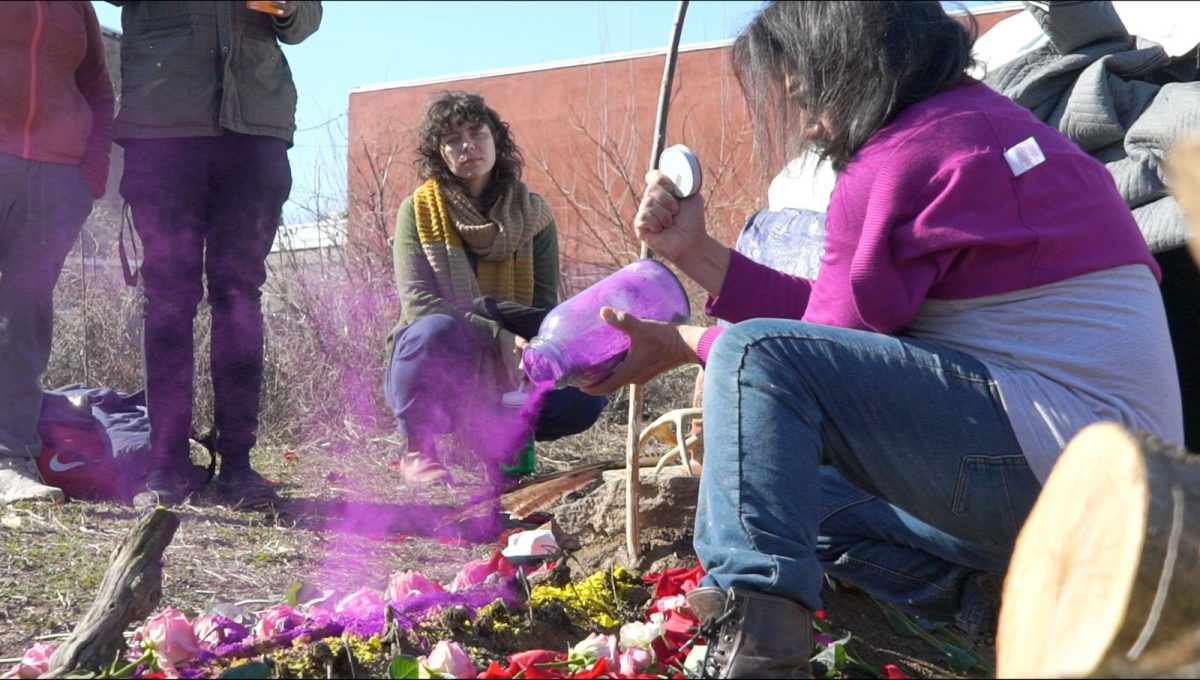
The same thing happened with the Temazcal (sweat lodge) that we built at Iglesias Garden. It is an intimate space for reflection and healing both physically and mentally, and the Temazcal serves not just our Indigenous community, but everybody living in this vicinity.
The Iglesias Gardens started to be known amongst Spanish people as the “Little Tenochtitlan” (named after the pre-colonial Aztec Mexican city), but it is known more popularly as “El Terreno.” Some people come [to the gardens] from Delaware and New Jersey, but mostly from South Philly, because they found what they were not able to find there, excluded by elitism.
MN: What is your favorite part of the Philadelphia art community?
CV: I shake hands with movements or institutions who give voice to disadvantaged artists who otherwise would not have a chance to amplify their voices, not just because now there is this federal money for organizations who support BIPOC artists, but to those genuine beings who have been supporting each other against systematic oppression of minorities for years. The pandemic just bursted the obvious happening for many decades of abuse. Solidarity shows off big time. I try to occupy visible spaces like LOVE Park or UPenn Museums, while celebrating my culture with freedom, dignity, and autonomy, carrying with me the needs and voice of my people, the ones without papers. Together we can give collective pride to our kids and some day the fruits of our efforts will be passed down to them. My art can be ephemeral but our collective legacy should be permanent.
MN: Favorite place to spend a Saturday in Philadelphia?
CV: Any free space on the parkway between City Hall and the art museum, or around South Street, from Magic Gardens to the river. I like to eat Mexican food on 9th street, both sides of Washington Avenue (if I’m craving some bites, El Bambino on the corner of 9th and Ellsworth St.)
This story is part of a partnership between The Citizen and Forman Arts Initiative to highlight artists and creatives in every neighborhood in Philadelphia. It will run on both the FAI website and The Citizen.
